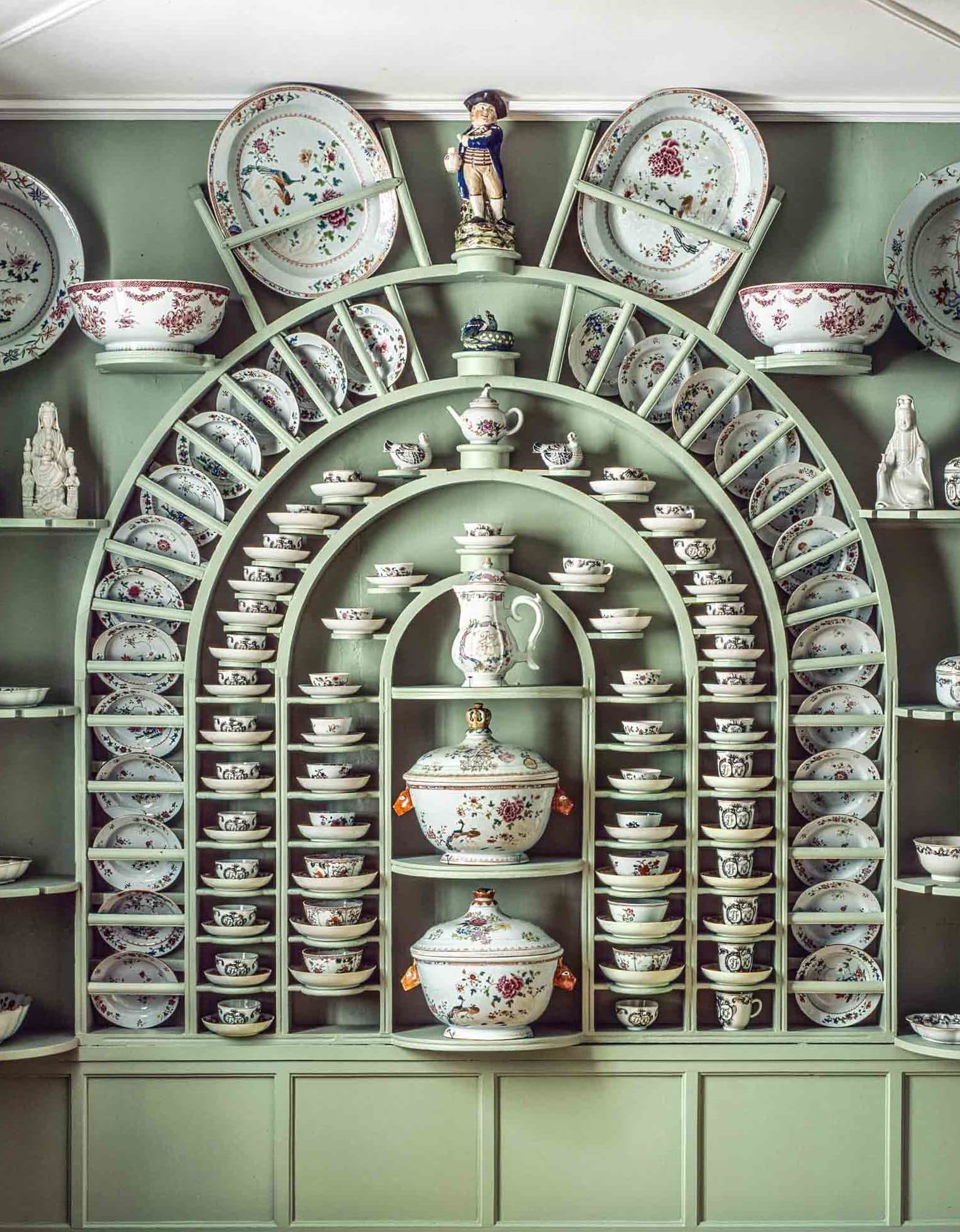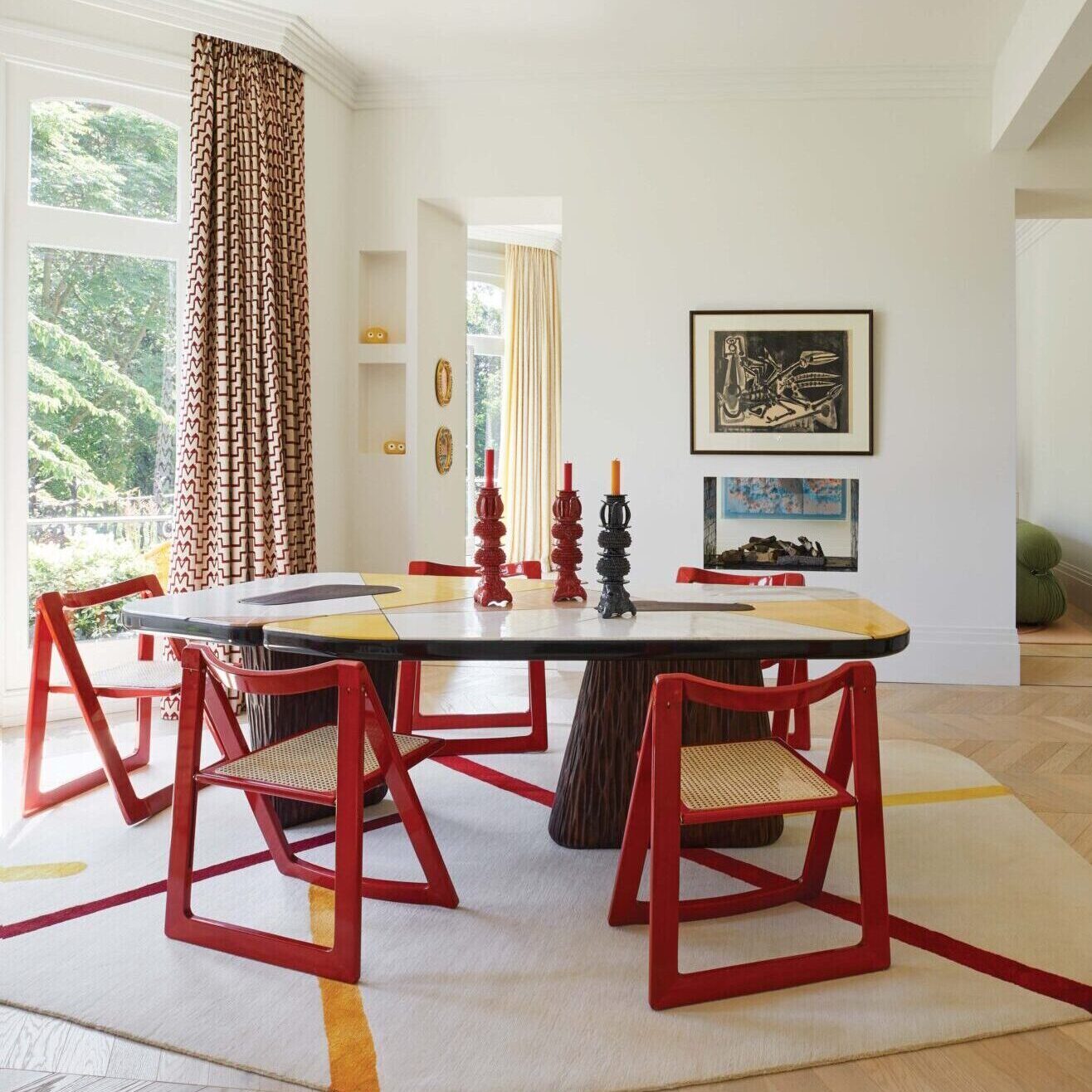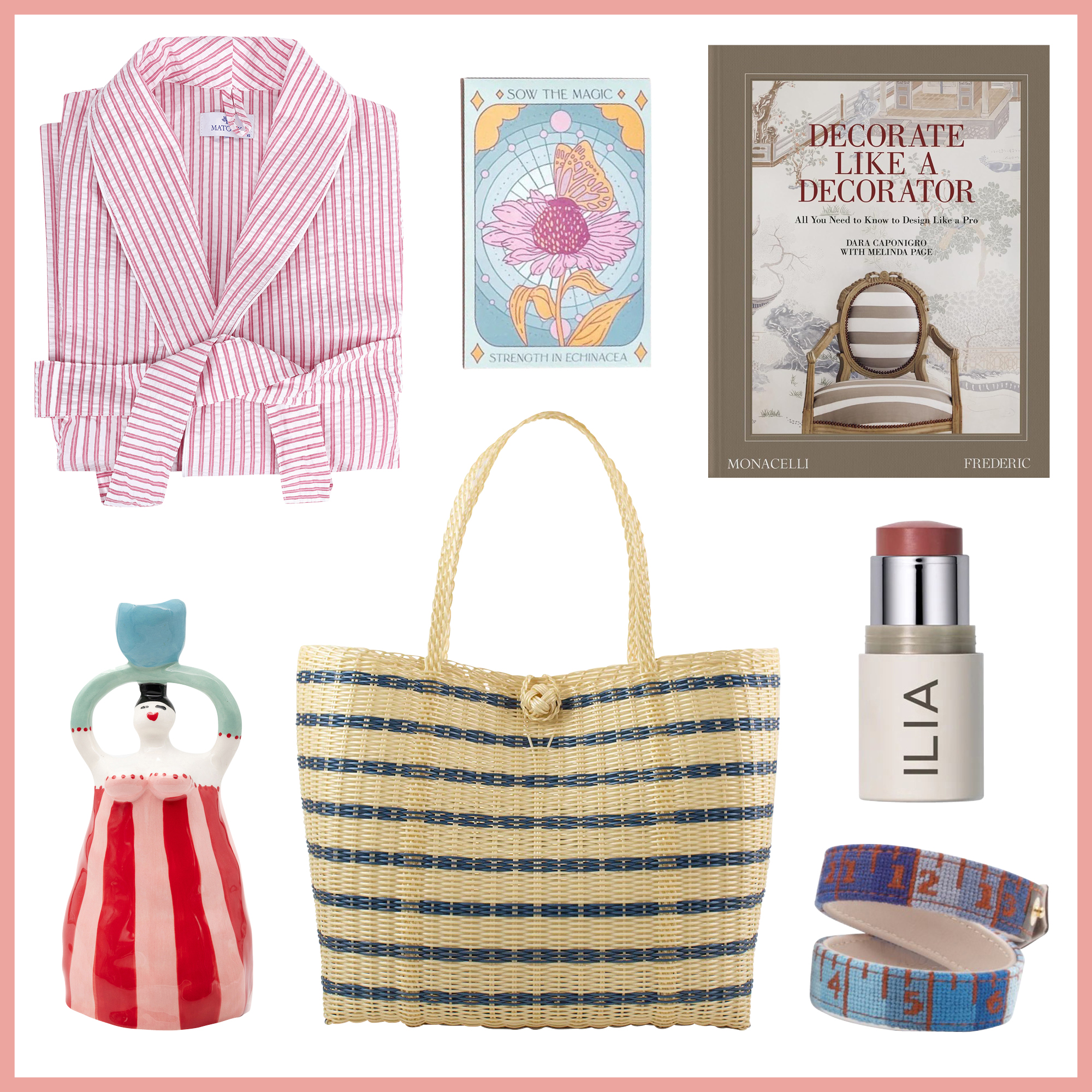Known for the magical hand-painted murals he’s whipped up for designer Amanda Lindroth and his own Palm Beach apartment, the Charleston, South Carolina, based artist and illustrator Aldous Bertram is also an accomplished art historian (with a PhD from Cambridge, no less) and has had a particular interest in China’s massive influence on European and American architecture and garden design. In his first book Dragons & Pagodas (Vendome), the U.K.-born Bertram takes us on a kaleidoscopic journey into the history of the term Chinoiserie, covering everything from architecture to patterns and palettes. While the entire tome is a feast for the eyes, we were especially drawn to his deep dive into porcelain and its enduring popularity, which we’ve excerpted below.

Dragons & Pagodas, $60. vendomepress.com
. . .

Without a doubt, blue-and-white porcelain has proved to be the most successful and longest-lasting decorative accessory in Western interior design. In chinoiserie, it has always been the jewel in the crown, the constant North Star in the ever-changing decorative firmament. Once more valuable than gold, no princely collection of porcelain was ever considered too large. Although far more accessible today, the aesthetic value of a large blue-and-white ginger jar is no less high.
 When trade with the Far East was first established by Portugal in the sixteenth century, the arrival of new materials ensured that Western visual and material culture would never be the same. Just as spices revolutionized Europe’s culinary experience and silks upended the native textile industries, porcelain transformed practices of collecting and display. The composition of this remarkably hard and lustrous material remained unknown, and it quickly became synonymous with its equally mysterious land of origin: China.
When trade with the Far East was first established by Portugal in the sixteenth century, the arrival of new materials ensured that Western visual and material culture would never be the same. Just as spices revolutionized Europe’s culinary experience and silks upended the native textile industries, porcelain transformed practices of collecting and display. The composition of this remarkably hard and lustrous material remained unknown, and it quickly became synonymous with its equally mysterious land of origin: China.
Porcelain was more readily available in Holland than anywhere else, becoming fully and fundamentally absorbed into Dutch art. There are few still life paintings without a Chinese cup or bowl, a favorite subject demonstrating the artist’s ability to capture the uniquely translucent gloss and perilous, precious fragility of the material.
So insatiable was the demand for porcelain that when direct trade with China was briefly interrupted by dynastic upheaval in 1644, cities such as Delft turned their entire economies toward producing an imitation product that has come to permanently link Holland with blue and white.
In the kitchen at Tureholm Castle in Sweden, the blue-and-white motifs on Chinese dishes were adapted on a fantastic scale to transform the very walls and ceiling into one cohesive chinoiserie confection.Erik Kvalsvik
A collection of blue-and-white porcelain jars and vases forms an unexpected display high above a bathtub at Plas Teg in Wales.Tim Beddow/The Interior Archive

Real Chinese porcelain remained in the exclusive possession of the very wealthiest families, but as collections grew, these precious specimens were moved out of closely guarded curiosity cabinets and onto highly visible shelves and mantelpieces. The fashion for displaying porcelain en masse was spearheaded by Amalia van Solms, Princess Consort of Orange, and found ready imitators.
Large porcelain collections became a key domestic status symbol, resulting in the development of increasingly extravagant methods of display. These ranged from pyramidal shelves in the corner of a room to the all-out explosion of wall brackets, which the German royals particularly embraced and executed most spectacularly in the Porcelain Cabinet of Berlin’s Charlottenburg Palace.
Chinese vases are ingeniously arranged over a corner fireplace built for this very purpose in the Blue Silk Dressing Room at Burghley House, England.Christopher Simon Sykes/The Interior Archive
An array of glossy vessels, some Chinese and others of European manufacture, glow against the deep burgundy walls of the porcelain room in the Paris apartment of fashion designer Andrew Gn.Simon Upton/The Interior Archive
In 1710 the secret to producing true porcelain in Europe was finally cracked at Meissen in Saxony under the patronage of Augustus the Strong. This breakthrough enabled the concept of a chinoiserie porcelain room to flourish, reaching an apogee in the Kingdom of Naples, where Augustus’s granddaughter had a boudoir constructed entirely out of the material.
Maria Amalia of Saxony’s famous room is made from interlocking panels of white porcelain, molded together with colorful Chinese figures and flowers, all produced by her own Royal Porcelain Factory of Capodimonte. It was so successful that when Maria married Charles III of Spain and moved to Madrid, she took the entire factory with her and had the room faithfully reproduced at the Palace of Aranjuez.
The infectious mania for collecting porcelain crossed the English Channel when Mary Stuart and her husband, Willem III of Orange, left Holland to inherit the English throne in 1689. They invited the leading French designer Daniel Marot to produce plans for new apartments at Hampton Court Palace featuring walls covered with thousands of plates and vases.
Although England had been relatively late to the Eastern trade, the country made up for the delay with an astonishing commercial success unparalleled in history. The Honourable East India Company, which was founded in 1600, took to the seas with such vigor that by the 1800s the joint-stock venture had conquered the entire Indian subcontinent with a private army that controlled half the world’s commerce. The importation of an average half-million pieces of porcelain annually during the eighteenth century triggered a trickle- down effect from the upper to the middle classes.

Acquisition of fine china was encouraged by the widespread habit of tea drinking, which gripped the English more strongly than elsewhere. The new-fangled “China Drink” was naturally best enjoyed in Chinese vessels. Like porcelain, tea was an expensive luxury, and it required so much paraphernalia to be served elegantly that an English writer warned that “a tradesman had better trust his hand in the mouth of a lion . . . than his purse in the hands of his wife, that’s a tea drinker.” A popular design for teacups and dishes has always been the chinoiserie Willow pattern—the most consistently reproduced pattern of all time.
Chinoiserie as a decorative style owes its very existence in large part to the passion for collecting real Chinese porcelain; the great distance and political isolation of China disallowed any experience of Asian culture other than through its exported manufactures. Porcelain pieces remain the pride of any Chinese-inspired interior scheme, as well as providing a constant resource for countless forms and patterns conjured up by European artisans over the centuries.
. . .

























